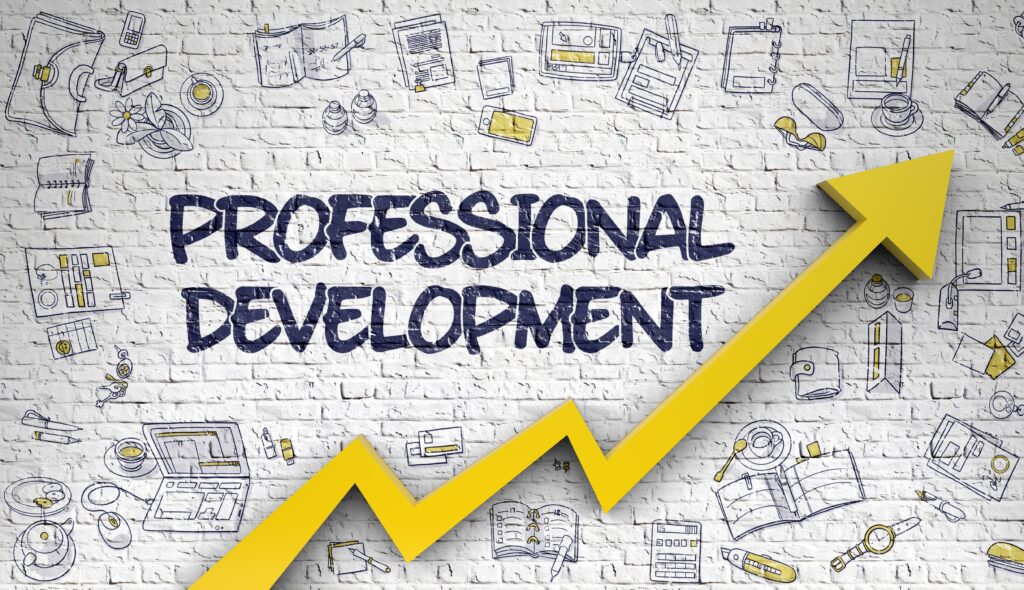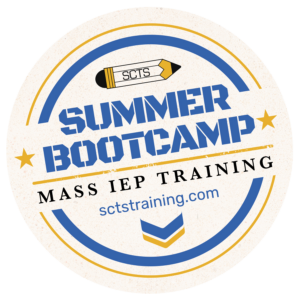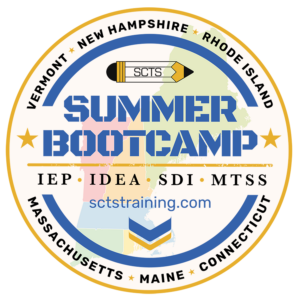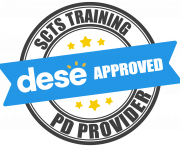Massachusetts IEP Training for District Leaders
Massachusetts IEP Training for District Leaders is designed for high level district (district leadership) and education leaders (principals) focusing on concepts and key regulations to ensure IEP team coherence and compliance.
- Self-guided / Online
- Open Enrollment
- 10 DESE Approved PD Hours
DESE Approved PD Provider

Special Education Professionals & Leadership
Learning method
Self-paced training series designed to provide support and education to owners, managers, and peer supports about best practices within the recovery home environment.
Self-Paced Online Course
Contact for Pricing
No instructor. Study on your own schedule
Massachusetts IEP Training for District Leaders
We aim to achieve the following through our IEP Training Courses:
- Provide 10hrs DESE Approved PD Credits
- Enhanced Expertise
- Improved Student Outcomes
- Inclusive Classroom Environments
- Legal Compliance
- Self-Paced Individual or Group Led
- Enhanced Compliance
- Improved Resource Allocation
- Enhanced Collaboration
- Data-Driven Decision-Making
Course Outline
Course designed for educators who have experience with the 2001 guidelines and are transitioning to The New IEP guidelines.
Introduction to The New IEP
- Introduction: About Our IEP Training Course
- Introduction: Overview of the New IEP Requirements
- Introduction: Why These Changes Are Being Implemented
- Activity: School Leadership & The New IEP Graphic Organizer
- Introduction: What’s Changing? IEP 2001 vs 2023
- Introduction: IEP Sections 1-8
- Introduction: IEP Crosswalk
- Introduction: Responsive Teams
- Introduction: IEP Improvement Timeline
- Introduction to the New IEP for Leaders
Getting Started with The New IEP
- Getting Started: Recalibration
- Getting Started: Meeting Structure and Purpose
- Getting Started: Start with an Agenda
- Getting Started: The IEP Team
- Getting Started: Questions for Discussion
- Getting Started with the New IEP for Leaders
Developing the IEP
- Developing the IEP: Introduction
- Developing the IEP: The New IEP Theme
- The New IEP Theme: Supporting Claims with Data: 10 Data Sources
- The New IEP Theme: Creating Strength Based IEPs
- The New IEP Theme: 4 Key Components to Understanding Student Needs
- The New IEP Theme: Summary
- Developing the IEP for School Leaders
IEP 1
- IEP 1: Introduction
- IEP 1: Student & Parent Concerns
- IEP 1: Preparing for the New IEP: Student and Parent Concerns
- The New IEP Checklist: Student & Parent Concerns
- IEP 1: Student and Parent Concerns for Leaders
IEP 2
- IEP 2: Student & Team Vision
- Preparing for The New IEP: Student and Team Vision
- The New IEP Checklist: Student Vision
- IEP 2: Student and Team Vision for Leaders
IEP 3
- IEP 3: Introducing the Student Profile
- IEP 3: The Student Profile: Overview
- IEP 3: Identification of Disability Category
- IEP 3: Special Factors
- IEP 3: Special Factors – English Language Learners and Assistive Technology
- IEP 3 Special Factors: AAC Questions and Autism-specific Questions
- IEP 3: Additional Special Factors
- IEP Checklist: Student Profile
PLAAFP
- PLAAFP: Overview
- PLAAFP: Student Strengths & Needs
- Preparing for The New IEP: The New PLAAFP
- PLAAFP: Student Profile Summary
- The New IEP Checklist: PLAAFP
Where’s The Data?
- Where’s the Data: Team Discussion
IEP 4
- IEP 4: Transition Planning Overview
- IEP 4: Transition Planning Summary
- The New IEP Checklist: Transition Planning
- IEP 4: Postsecondary Transition Planning or Leaders
IEP 5
- IEP 5: Accommodations
- IEP 5: Modifications
- The New IEP Checklist: Accommodations & Modifications
- IEP 5: Accommodations and Modifications for Leaders
IEP 6
- IEP 6: Goals Overview
- IEP 6: Measurable Annual Goals
- IEP 6: Goal Writing in the New IEP Format
- IEP 6: Standard IEP Goal Formula
- Preparing for IEP 6: Goal Writing
- The New IEP Checklist: Measurable Annual Goals
- IEP 6: Goal Writing for Leaders
IEP 7
- IEP 7: Overview
- Preparing for The New IEP: LRE and Service Delivery
- The New IEP Checklist: Service Delivery
- IEP 7: Service Delivery for Leaders
IEP 8
- IEP 8: Additional Information
- IEP 8: Response Section
- IEP 8: Technical Guide for Additional Information
- IEP 8: Additional Information and the Response Section for Leaders
Course Completion
- New IEP Training for School Leaders Course Completion
- IEP Training for Leadership Course Survey
- Download Certificate
IEP Implementation Resources
- Key Regulations
- IEP Augmentation Checklist
- IEP Resource Guide: Sources and Citations
- Downloads: IEP Training Course
- Downloads: Tier II / Tier III Assessments
- IEP Implementation Recommended Reading
- IEP Transition: Resources by State
- IEP Goal Calibration Table
- Leadership / Management Resources & Downloads
- Meetings Resources & Downloads
- Teams Resources & Downloads
- Communication Resources & Downloads
Support: 3 Ways to Get the Help You Need
Contact SCTS Support in one of the following 3 ways – and we will have one of our support specialists reply as soon as possible. All requests are replied to in the order they are received. Requests received before 1pm will be replied to the same business day. Requests received after 2pm will be replied to the following business day.
Technical Requirements for Our Online Courses
To successfully participate in an online course, the following technical requirements should be met:
1. Device Compatibility
- Computer: A desktop or laptop with a modern operating system (Windows 10 or later, macOS 10.13 or later).
- Mobile Device: A smartphone or tablet with Android (version 8.0 or later) or iOS (version 13.0 or later).
- Screen size of at least 10 inches is recommended for optimal viewing and navigation.
2. Internet Connection
- A stable internet connection with a minimum download speed of 5 Mbps.
- For live sessions or videos, a faster connection (10 Mbps or higher) is recommended.
3. Browser Requirements
- The latest version of Google Chrome, Mozilla Firefox, Microsoft Edge, or Safari.
- JavaScript and cookies must be enabled.
4. Software Requirements
- PDF reader (e.g., Adobe Acrobat Reader) for accessing course materials.
- Word processing software (e.g., Microsoft Word or Google Docs) for completing assignments.
- Zoom or similar applications may be required for live sessions or webinars.
5. Audio and Video
- Speakers or headphones for listening to lectures or videos.
- A microphone and webcam (built-in or external) for interactive sessions or discussions, if applicable.
6. Other Considerations
- Adequate storage space to download course materials if needed.
- Ability to access a reliable email account for course communications and updates.
These requirements ensure smooth access to course content and effective participation in all activities.




